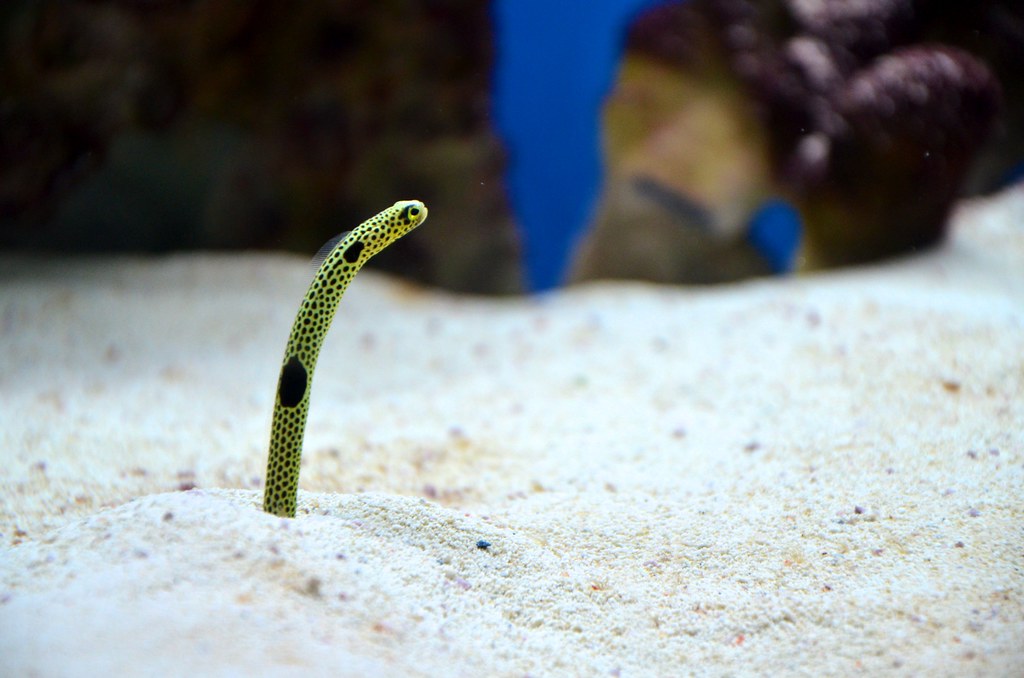Eels downrunning in the fall
The change of seasons means many things for people, plants, and animals. In the Northeast, as autumn daylight shortens the deciduous forest’s spectacular colors emerge. Cooler, wetter autumn weather creates important signals for animals including the American eel, one of 12 migratory species that live in our coastal rivers. We are just beginning to understand the many often subtle environmental cues that influence animal behavior, whether that is temperature, light, pheromones, or noise.
As we enjoy the beauty of fall colors, adult American eels — having lived for up to twenty or thirty years in small headwater streams hundreds of miles from the ocean — will begin a downstream journey that ends in the Sargasso Sea in the Caribbean. These adults from along the Atlantic Coast are joined by others from across the Atlantic Ocean who have come from European Rivers to this same giant gyre of sargassum, a species of algae, commonly called the Sargasso Sea. While no one has yet directly observed the mating of eels, the adults spawn within the hundreds of square miles of sargassum and then die. The offspring, completely transparent and shaped like a willow leaf, catch the Gulf Stream and ride the currents back to either the U.S. or European coast. By the following spring, they begin to swim back up rivers first as “glass” eels and then as bigger juvenile “elvers”. These returning juveniles will swim against the current of spring freshets and often wiggle their way up and over the rocks and ledges that form the natural waterfalls and rapids.
And if you ever thought your commute back home through traffic was tough, think of the eels! It’s an incredible migration — adult eels have been found almost 400 miles from the Atlantic Ocean in the headwaters of the Connecticut River!
But unfortunately for the eels and the other creatures that depend on them, we’ve made that commute both down the river and back up again harder and often hazardous. Dams, particularly hydropower dams, were not designed to allow for the safe, timely, and effective (those are legal standards) passage up and downstream for fish using our rivers. Adult eels can be killed passing through turbines and upstream juveniles cannot get past the vertical faces of dams. And while there have been decades of attention to helping those charismatic fish like salmon, little attention was paid to eels which have been an important food staple for thousands of years.
There is some good news: Today there is widespread effort to ensure that all migratory fish can get to and from their river homes safely, including the American eel. The bad news? Getting known solutions implemented at hydroelectric dams as dam owners seek federal and state licenses as well as green certification is a challenge. Licensing proceedings take years and owners often push back because of costs, all while eel populations plummet. For example, a pending relicensing in the state of Maine for a series of dams owned by Brookfield Renewable Partners illustrated how hydropower dams have harmed American eels. A study required during the relicensing showed that close to 95% of adult eels would be killed passing through the turbines of these projects. This is a good example of the challenges eels and dam owners face in working to meet their legal obligations to public trust resources and safely pass these fish.

Why should we care about a shy and wriggly fish? Migratory fish like the eel are an important part of a functioning ecosystem that has evolved over thousands of years. They are an important food source, they bring marine nutrients not otherwise found in freshwater ecosystems, and all animals and plants have an inherent right to exist.
Want to read more? The Book of Eels (Ecco) by Patrik Svensson is a gentle and captivating narrative on the life history of several eel species and Svensson’s personal connections to these animals.
Want to see more? PBS Nature episode
Looking to really dig deep? Atlantic States Marine Fisheries Commission – American eel


